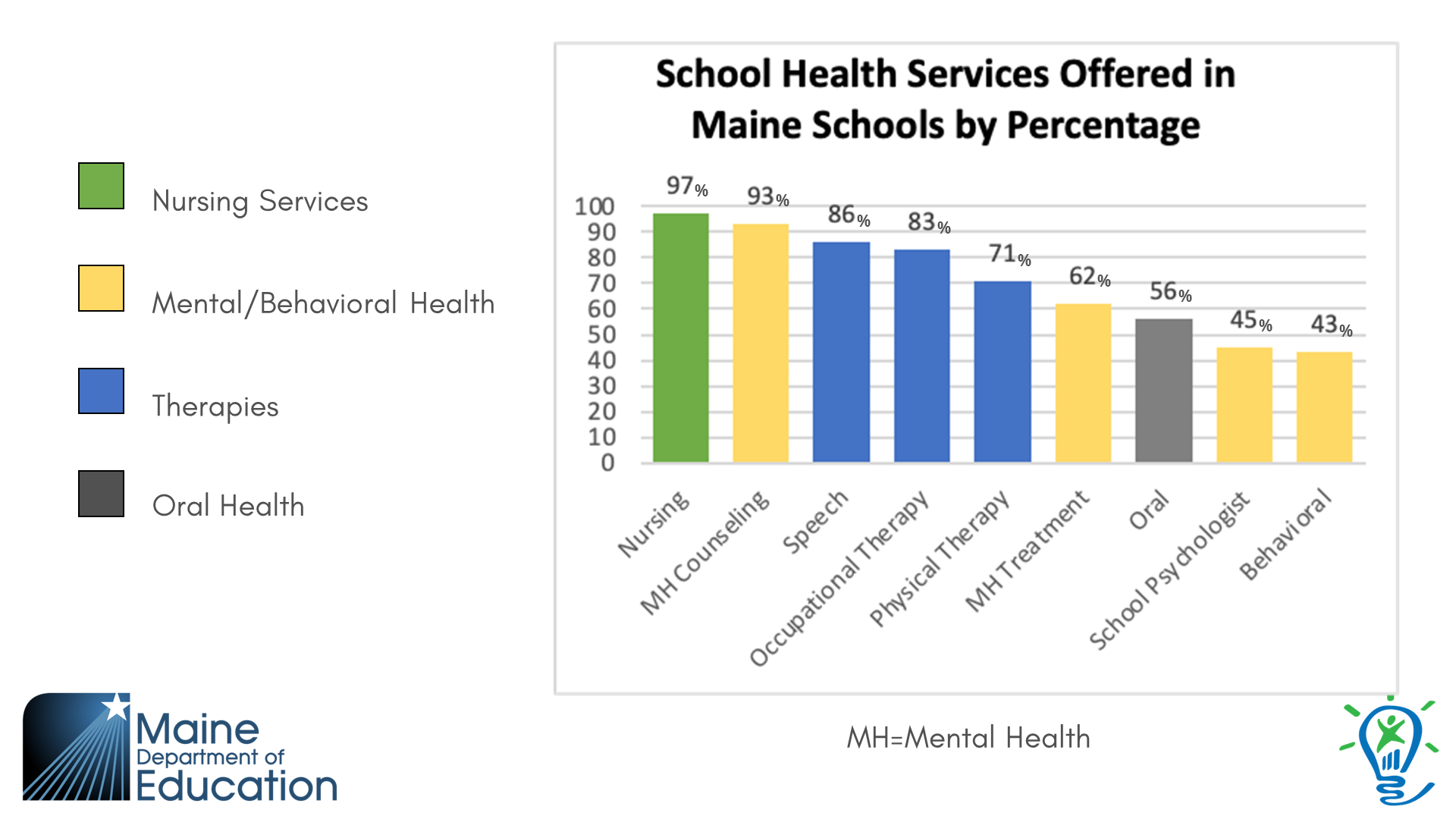
Data helps build bridges that connect school health services to the rest of the health care system. This data collection helps to demonstrate the unique and critical contributions to the health of school-age children and their academic achievement. As part of the annual report, we include the optional reporting connected with National Association of School Nurses, Every Student Counts.™
2023 - 2024 School Health Annual Report
Youth Risk Behavior Surveillance System (YRBSS) is a set of surveys that track behaviors that can lead to poor health in students grades 9 through 12. The system measures health-related behaviors and experiences that can lead to death and disability among youth and adults. Results help monitor health trends, identify emerging issues, and plan and evaluate programs that can help improve adolescent health. You can access the national summary data on the US CDC Adolescent and School Health, YRBS Explorer webpage. In Maine, we utilize the Maine Integrated Youth Health Survey to conduct the YRBS surveillance. An example of a MIYHS fact sheet is shown here.
School Health Profiles (SHP) surveys are conducted every even-numbered year by education and health agencies across the United States. Middle and high school principals and lead health education teachers respond to the surveys. Maine DOE requests participation of all middle and high schools. Profiles monitors the current status of: School health education requirements and content, physical education and physical activity, practices related to bullying and sexual harassment, school health policies related to tobacco-use prevention and nutrition, school-based health and mental health services, family engagement and community involvement, and school health coordination. You can access the national summary data on the US CDC Adolescent and School Health Profiles Explorer webpage. Highlighted below is
N/A = Confidence intervals not calculated for census sites and are not applicable for 0 percent or 100 percent.
CI = 95% Confidence Interval which indicates that 95% of the time, the value is expected to fall within this estimated range.
Source: Division of Adolescent and School Health, National Center for Chronic Disease Prevention and Health Promotion
Environmental Scan and State Assessment of School Health Services in Maine Schools 2023
To gain a deeper understanding of the state of school health services, the Maine Department of Education (MDOE) commissioned an environmental scan and state assessment of school health services. The purpose of the project was to describe schoolhealth services, examine innovative models and infrastructures that facilitate Medicaid billing, and provide recommendations for a 3-5 year plan to strengthen school health services. The Department contracted with the Center for School Health Innovation & Quality housed in the Public Health National Center for Innovations, which is part ofthe Public Health Accreditation Board, a nonprofit organization. Download the Report Brief from the Environmental Scan Fall 2023.
View the Fact Sheet and Recommendations from Environmental Scan Fall 2023.

Other Data of Interest
- Child Trends School Health research and evaluations identify the policies, programs, and practices that bolster students’ physical and social well-being.
- Kids Count Data Book from the Annie E. Casey Foundation presents national and state data across four domains — economic well-being, education, health and family and community — and ranks states in overall child well-being.
- Maine Immunization Program Assessment Reports Immunizations remain the single most effective way to protect Mainers against disease and some cancers. The Maine Immunization Program which is part of Maine CDC, Department of Health and Human Services, reviews state and national data to assess and improve immunization rates, identify populations at risk, and measure the impact of current initiatives. The school level annual report can be found within this page.
- National Survey of Children’s Health (NSCH) provides data on multiple, intersecting aspects of children’s lives—including physical and mental health, access to and quality of health care, and the child’s family, neighborhood, school, and social context.
- US CDC SchoolVaxView is your source for national data, information, and news about school vaccination coverage from state reports of the estimated number of children in child care, kindergarten, and middle school who have received vaccinations recommended or required by their state. On this site, you can learn more about the number of schoolchildren who have received vaccinations and other school vaccination topics.
Contact
Emily Poland, MPH, RN, NCSN
School Nurse Consultant
Coordinated School Health Team Leader
Email: emily.poland@maine.gov